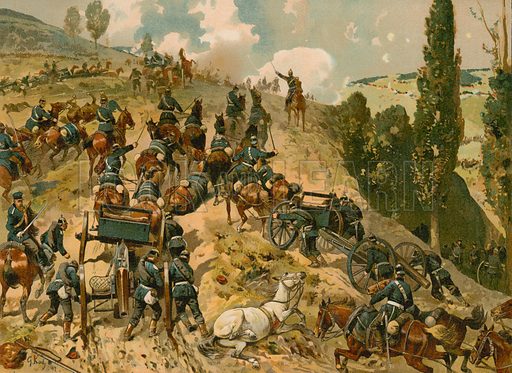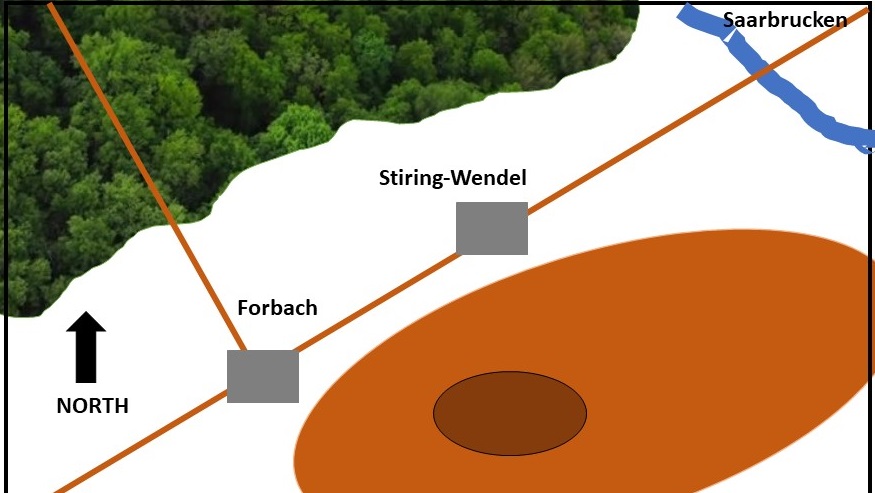Spicheren, 1870
A "What-If" Scenario for La Guerre a Outrance


At the very start of the Franco-Prussian War, the Prussians - unexpectedly in a position to invade France - stumbled into an unwanted battle just outside of Saarbrucken. An aggressive Corps commander pushes forward in an attack on what he thinks is a French rear-guard, only to find that he is assaulting an entire French Corps drawn up in a "position magnifique." With the Prussian forces marching "to the sound of the guns," an outnumbered Prussian force extracts victory from the jaws of defeat in a classic example of French blundering and upper-echelon inertia.
It could have gone quite otherwise.
This scenario provides for a re-fight of the main portion of the battle, giving the French the chance to change history, but also allowing for the random adjustment of Prussian arrival times - a factor which was one major cause of French timidity historically. Poor French scouting meant that they remained unsure exactly what they faced, even as Prussians crossed the Saar and assaulted their positions, and this scenario allows for some of their fears to (possibly) become reality.
This scenario has been designed for remote play using 25mm miniatures: all base sizes and distances are doubled. Terrain has been simplified for remote play.
The map shows the area around Forbach, Stiring-Wendel, and the nearby ridge where most of the fighting took place. The hill is rough and provides soft cover, as do the woods. Forbach and Stiring-Wendel provide hard cover. The Saar may only be crossed at the bridge.

French forces set up first, in any formation, in or between Forbach and Stiring-Wendel, on the hill, or anywhere to the south of these positions.
Prussians deploy one brigade in maneuver column within 12 inches of the bridge over the Saar, accompanied by a single divisional artillery unit in maneuver column. Three brigades, a regiment of cavalry, and a second divisional artillery unit will march onto the table from beyond the Saar, starting on the first turn.
Starting on turn two, the Prussian player will roll a single die: if a score less than the current turn number is rolled, then two additional brigades, a regiment of cavalry, and another divisional artillery unit will be available to march onto the table using the road which enters toward the northwest corner (the road to Forbach through the woods).
Corps Commander
Two divisions, each:
Divisional Commander
2 Brigades Line Infantry
Divisional Artillery (1 base)
One division:
Divisional Commander
1 Brigade Line Infantry
One division:
Divisional Commander
2 Brigades Line Cavalry
Historically, the chain of command proved to be very flexible: Prussian units followed the orders of any commander of suitable rank throughout the battle as their formation became inextricably mixed together. For this scenario, any general may command any Prussian unit.
3 Prussian Generals
6 Brigades Line Infantry
2 Regiments (2 bases) Line Cavalry
3 Divisional Artillery units (2 bases each)
The Prussian goal is to capture Forbach and Stiring-Wendel (minor victory) and additionally the hill (major victory). The French goal is to hold onto these positions. If either army has half or more of its combat units destroyed, the game is lost.